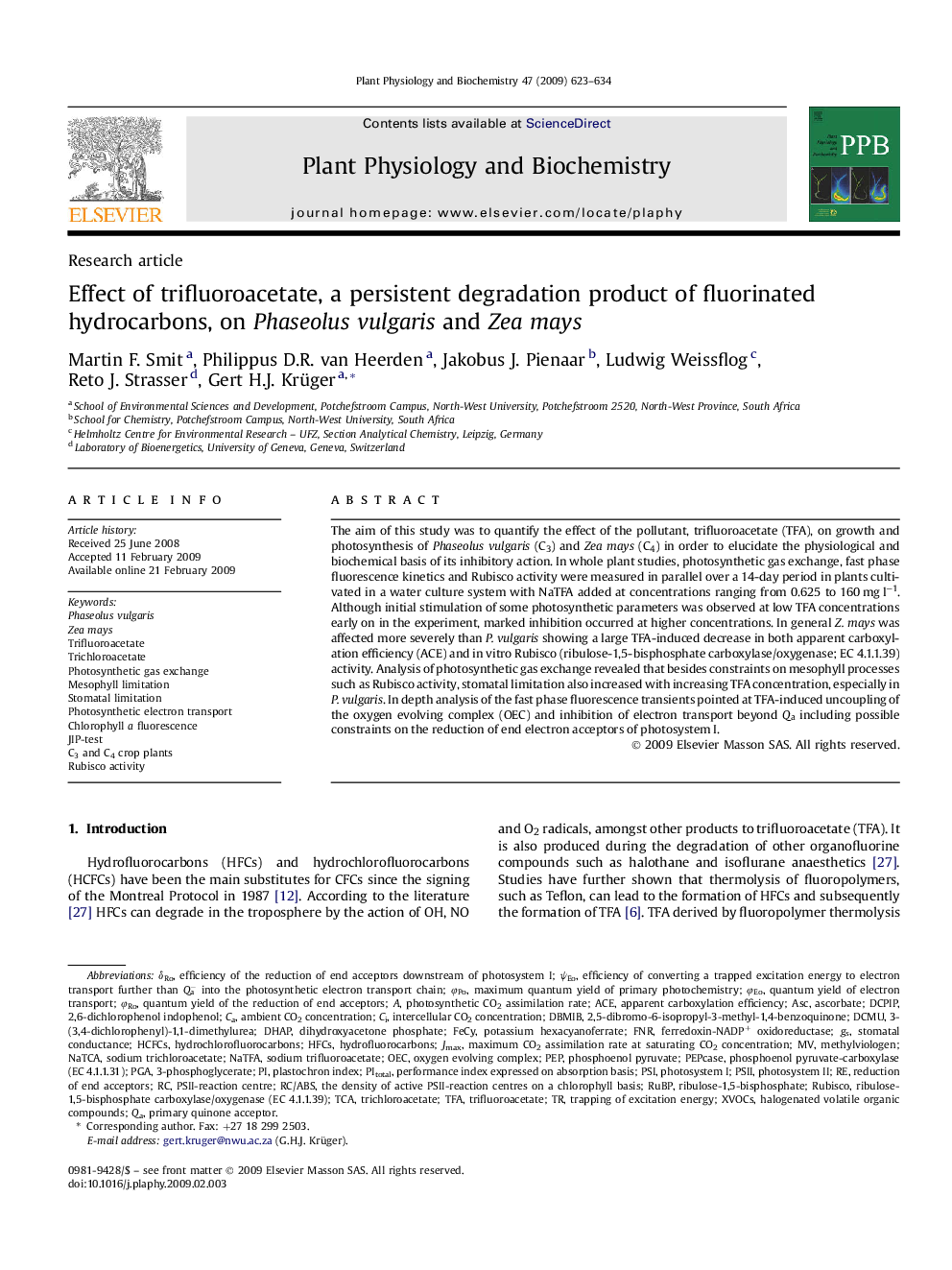| Article ID | Journal | Published Year | Pages | File Type |
|---|---|---|---|---|
| 2016592 | Plant Physiology and Biochemistry | 2009 | 12 Pages |
The aim of this study was to quantify the effect of the pollutant, trifluoroacetate (TFA), on growth and photosynthesis of Phaseolus vulgaris (C3) and Zea mays (C4) in order to elucidate the physiological and biochemical basis of its inhibitory action. In whole plant studies, photosynthetic gas exchange, fast phase fluorescence kinetics and Rubisco activity were measured in parallel over a 14-day period in plants cultivated in a water culture system with NaTFA added at concentrations ranging from 0.625 to 160 mg l−1. Although initial stimulation of some photosynthetic parameters was observed at low TFA concentrations early on in the experiment, marked inhibition occurred at higher concentrations. In general Z. mays was affected more severely than P. vulgaris showing a large TFA-induced decrease in both apparent carboxylation efficiency (ACE) and in vitro Rubisco (ribulose-1,5-bisphosphate carboxylase/oxygenase; EC 4.1.1.39) activity. Analysis of photosynthetic gas exchange revealed that besides constraints on mesophyll processes such as Rubisco activity, stomatal limitation also increased with increasing TFA concentration, especially in P. vulgaris. In depth analysis of the fast phase fluorescence transients pointed at TFA-induced uncoupling of the oxygen evolving complex (OEC) and inhibition of electron transport beyond Qa including possible constraints on the reduction of end electron acceptors of photosystem I.
